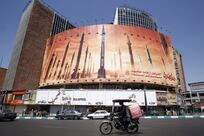On June 5, when Palestinian protesters tried to march from Ramallah to Jerusalem in observation of the 44th anniversary of Israel's 1967 occupation, they were sent scrambling amidst clouds of Israeli tear gas and hailing rubber bullets.
Hours later on the Syrian border, Israeli soldiers responded to a separate demonstration by killing 23 unarmed Palestinian refugees, who were also trying to exercise their right of return.
Both of these incidents illustrate an often overlooked component of the Arab Spring: as Israel stands forcefully to oppose Palestinian rights, Palestinian unity is deepening. And as the wave of uprisings demanding freedom and equality sweep the Middle East, the struggle for unity has brought the Arab Spring to Palestinians' door.
Using mass protest and direct action to demand their freedoms, Palestinians are collectively using a resistance strategy championed by a handful of West Bank border villages.
On May 15 - Nakba day, the anniversary of Israel's displacement of 750,000 Palestinians in 1948 - the strategy spread to all faces of the Palestinian struggle. Refugees in Syria, Lebanon and Gaza marched on Israel's borders for the first time, while West Bankers clashed at checkpoints to Jerusalem. Meanwhile, despite new Israeli laws making Nakba commemoration illegal, Palestinian citizens of Israel marched in Jaffa.
Connecting these fronts has required the concept of inclusion, representation and a programme based on freedom through a shared, indivisible political future. Using shared grievance to unite and ignite resistance, a group dubbed the "March 15" movement (so-named because of the mass demonstrations organised that day) has capitalised on the symbolic national anniversaries to articulate their plight.
These efforts have also galvanised Palestinian support beyond the street. By demanding a broad-based democratic overhaul of the Palestine Liberation Organisation as their core demand, the Palestinian Spring is using unity to push the struggle forward.
Caught off guard by the blunt and overpowering clarity with which Palestinians are now speaking, both the Palestinian Authority and Hamas have been forced to embrace unity to maintain political relevancy.
Emerging with unexpected force and momentum, March 15 has found itself as representing an alternative to the status quo and the politics of the Oslo era. However, there are also risks of this struggle stagnating.
The movement's strategy has been based on waiting for symbolic dates to rally around, and then using the fallout to mobilize for the next date, a problem especially acute during a summer with few notable events. This approach is based the understanding that Israel will respond to protests in the expected belligerent way.
"We do not know what is going to happen, but we have set something in motion," said March 15 leader Fadi Quran at the Qalandia checkpoint during the Nakba demonstration. "It is now up to the Israelis and how they react."
This date-specific approach has been borrowed from the anti-wall campaign in West Bank border villages such as Bil'in. An alternative to the armed struggle component of the second intifada, anti-wall demonstrations gained international media attention and modest gains in their efforts to reclaim lands annexed by Israel.
However, after several years this approach was also a source of the movement's stagnation and decline prior to March 15. This concern already risks becoming reality in the Palestinian Spring.
The June 5 demonstrations in Qalandia, which were identical in preparation and planning to the Nakba day in May, failed to mobilise even half the number of demonstrators.
And even though Israel killed 23 unarmed demonstrators on the Golan Heights, the killings were followed by relative quiet which did not escalate demonstrations throughout the West Bank, Gaza or the refugee communities.
The events of June 5 reaffirmed the fronts, tactics and demands of the Palestinian Spring, but may ultimately fail to expand on the momentum in the streets or successfully build on past responses to repression. If Palestinians follow this spring's current approach and wait until September, when the declaration of statehood is expected, protest organisers may find that the energy they have been seizing on has evaporated in the absence of action.
Still, the second international Gaza flotilla - set to sail at the end of this month - could provide an opportunity to break this pattern before it sets in.
If the flotilla breaks the Israeli siege and reaches the shores of Gaza, it will be the first meeting between the international Palestinian solidarity movement and the Arab Spring, a meeting that will add a new dimension to the unity struggle. If it is stopped, it will be a clear military statement by Israel of its current commitment to Palestinian division, generating much new grievance to mobilise with.
The flotilla will provide Palestinians with a context similar to the March 15 protests, where by setting the terms of the showdown, Palestinians will have the chance dictate the politics and announce their demands. The opportunity is theirs to seize.
Jesse Rosenfeld is journalist formerly based in Ramallah and Tel Aviv. Joseph Dana is a journalist and writer based in Tel Aviv and the West Bank.




